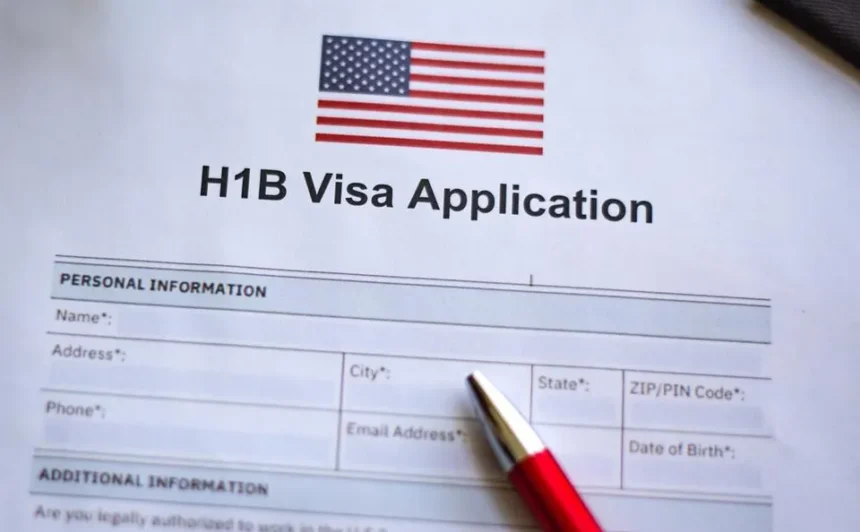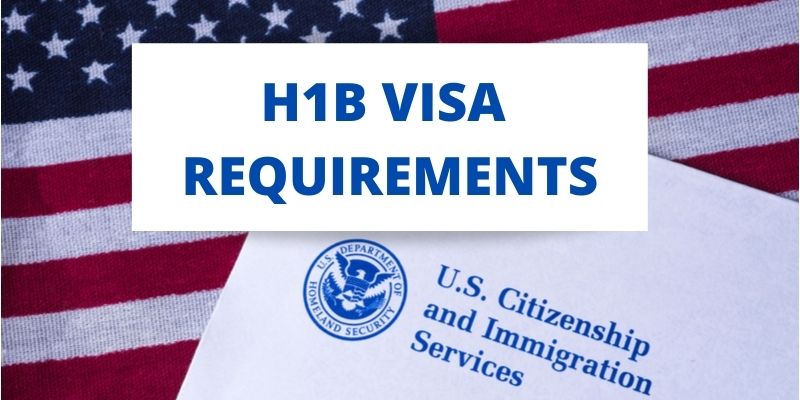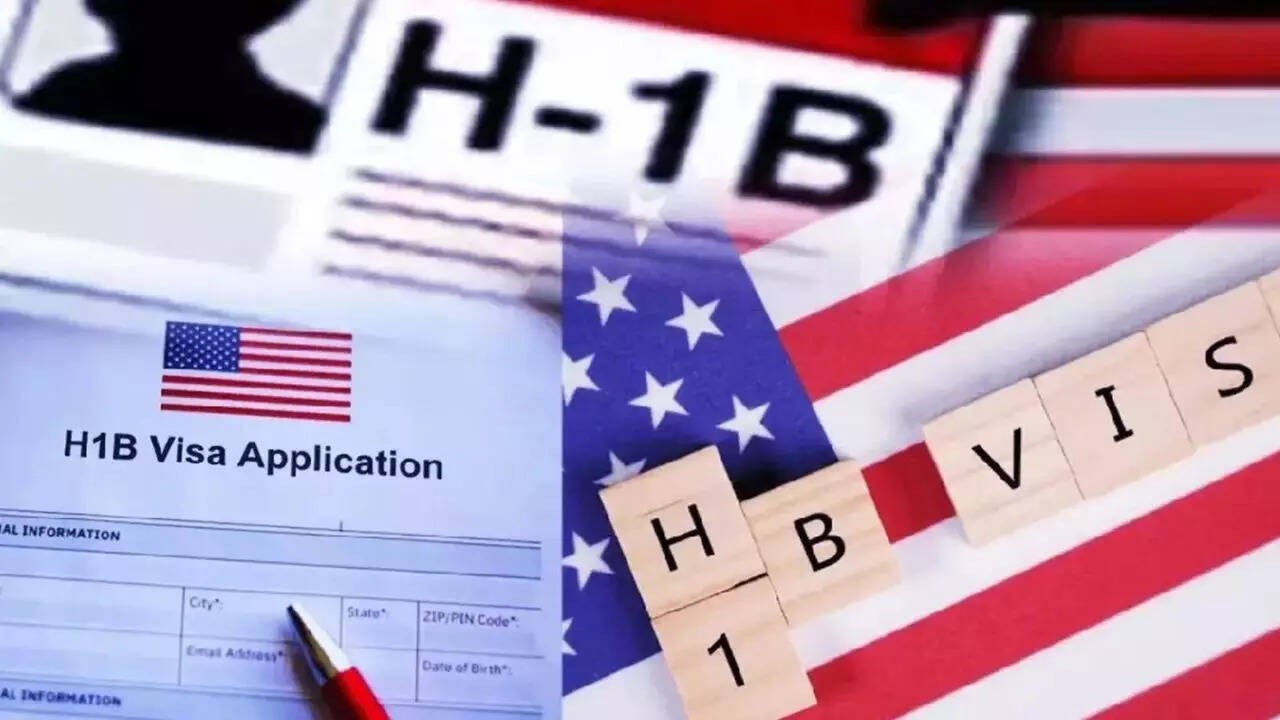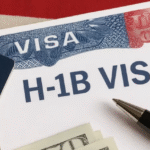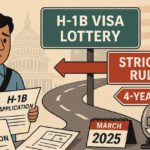The United States remains one of the top destinations for skilled professionals seeking global opportunities. For decades, the H-1B visa has been the gateway for foreign workers in technology, engineering, healthcare, and business to work in America. With the 2025 filing season underway, many international candidates and U.S. employers are preparing their applications.
This blog will provide a step-by-step guide on how to apply for the H-1B visa in 2025, covering eligibility, required documents, lottery registration, fees, timeline, and expert tips to improve your chances of success.
Understanding the H-1B Visa
The H-1B visa is a non-immigrant work visa that allows U.S. employers to temporarily hire foreign professionals in specialty occupations. These are jobs that usually require:
-
A bachelor’s degree or higher in a specific field.
-
Specialized knowledge in areas such as IT, finance, medicine, engineering, mathematics, or science.
Every year, the U.S. government issues a limited number of H-1B visas. For fiscal year 2025, the cap remains 85,000 visas:
-
65,000 under the regular quota.
-
20,000 reserved for individuals with a U.S. master’s degree or higher.
Because demand far exceeds supply, the U.S. Citizenship and Immigration Services (USCIS) uses a lottery system to randomly select applicants from the pool of registrations.
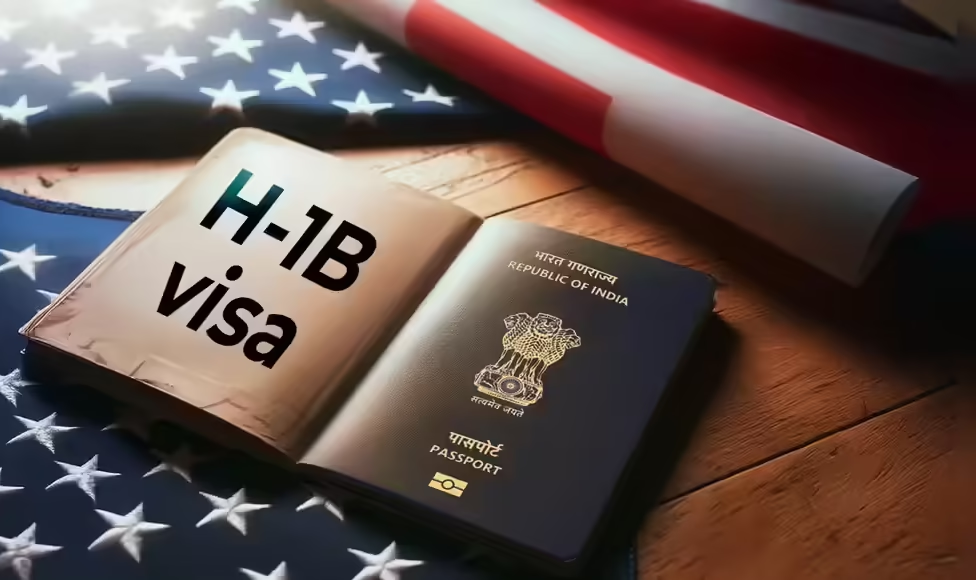
Who Can Apply for the H-1B Visa?
The application involves two parties: the U.S. employer and the foreign worker.
Eligibility for the Worker (Beneficiary):
-
Must hold at least a bachelor’s degree or equivalent in a relevant field.
-
Degree must match the job requirement (e.g., computer science for software engineering).
-
Work experience may sometimes substitute for a degree (3 years of experience = 1 year of college in U.S. equivalency).
Eligibility for the Employer (Petitioner):
-
Must be a U.S.-based company willing to sponsor the worker.
-
Must offer a job that qualifies as a specialty occupation.
-
Must agree to pay the prevailing wage for the role to ensure fair labor practices.
Step-by-Step Process to Apply for an H-1B Visa in 2025
Applying for the H-1B visa involves multiple steps and strict timelines. Let’s break it down:
1. Employer Creates USCIS Online Account & Registers for the Lottery
-
USCIS requires employers to register online during the annual registration period (usually March).
-
Employer must provide basic details about the company and the worker.
-
Registration fee: $10 per applicant.
-
After registration closes, USCIS conducts the lottery selection.
If selected, the employer can file a full H-1B petition on behalf of the worker.
2. Labor Condition Application (LCA) with the Department of Labor (DOL)
Before filing the petition, the employer must:
-
File an LCA (Form ETA-9035) with the DOL.
-
Confirm that they will pay the worker equal or higher wages compared to U.S. workers in the same role.
-
Certify that hiring the foreign worker will not negatively affect U.S. employees.
The LCA is usually processed within 7–10 days.
3. Employer Files Form I-129 (Petition for Non-Immigrant Worker)
Once the LCA is approved, the employer submits the main petition to USCIS:
-
Form I-129 along with supporting documents.
-
This step is only possible if the candidate is selected in the lottery.
The petition must include:
-
Approved LCA from the Department of Labor.
-
Copy of the beneficiary’s passport.
-
Educational certificates (degrees, transcripts, credential evaluation if foreign degree).
-
Work experience letters.
-
Employer’s business documents (tax returns, company profile, financial statements).
-
Detailed job description proving it qualifies as a specialty occupation.
4. USCIS Processing and Approval
-
Once USCIS receives the petition, it issues a receipt notice.
-
The petition can be processed under:
-
Regular Processing (2–6 months average).
-
Premium Processing ($2,805 fee, results within 15 business days).
-
If approved, USCIS issues Form I-797 (Approval Notice).
5. Visa Stamping at a U.S. Embassy or Consulate
If the worker is outside the U.S.:
-
They must apply for an H-1B visa stamp at a U.S. consulate.
-
Attend an interview and present documents (I-797 approval, passport, degree certificates, employer letter).
-
Upon approval, the visa is stamped in the passport, and the worker can travel to the U.S.
If the worker is already in the U.S. (e.g., on an F-1 student visa):
-
They may apply for a change of status instead of leaving the U.S.
6. Entry into the U.S. and Beginning Work
-
The H-1B visa holder can enter the U.S. 10 days before the employment start date.
-
The visa is initially valid for 3 years and can be extended up to 6 years (with some exceptions for green card applicants).
H-1B Visa Fees in 2025
Employers must bear most of the costs of filing an H-1B petition. Typical fees include:
-
Registration Fee: $10
-
Base Filing Fee (Form I-129): $460
-
ACWIA Training Fee: $750 (employers with ≤25 employees) / $1,500 (larger employers)
-
Fraud Prevention Fee: $500
-
Public Law 114-113 Fee: $4,000 (for companies with 50+ employees and majority H-1B/L-1 workers)
-
Premium Processing (Optional): $2,805
Timeline for H-1B Visa 2025
-
March 2025 – Employers register online for lottery.
-
April 2025 – Lottery results announced, selected employers can file petitions.
-
April–June 2025 – Employers file petitions (Form I-129).
-
Summer 2025 – USCIS processes petitions.
-
October 1, 2025 – H-1B employment start date (beginning of U.S. fiscal year).
Documents Required for H-1B Application
From the Worker (Beneficiary):
-
Valid passport.
-
Educational certificates (degree, transcripts).
-
Professional experience letters.
-
Updated résumé.
-
Credential evaluation (if degree is foreign).
From the Employer (Petitioner):
-
Company tax returns and financial records.
-
Business license.
-
Employer support letter describing the job.
-
Approved LCA from the Department of Labor.
Tips for a Successful H-1B Application
-
Apply Early: Employers should not wait until the last day of registration or filing.
-
Choose Employers with Strong Track Records: Some companies have higher approval rates due to compliance history.
-
Have All Documents Ready: Missing paperwork is one of the main reasons for rejection.
-
Consider Premium Processing: If time-sensitive, premium processing ensures faster decisions.
-
Advanced Degrees Advantage: Having a U.S. master’s or higher degree improves lottery chances.
-
Work with Immigration Attorneys: Professional legal support increases the chances of approval.
Common Challenges in 2025
-
High Competition: The lottery system means even highly qualified applicants might not be selected.
-
Employer Dependence: The visa is tied to a specific employer, limiting job mobility.
-
Strict Compliance: USCIS may issue Requests for Evidence (RFE) if the job description doesn’t clearly prove a specialty occupation.
-
Processing Delays: Standard processing can take months, affecting project timelines.

